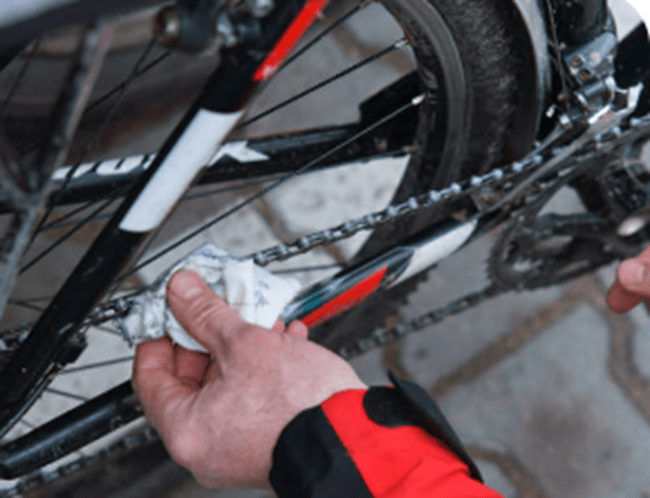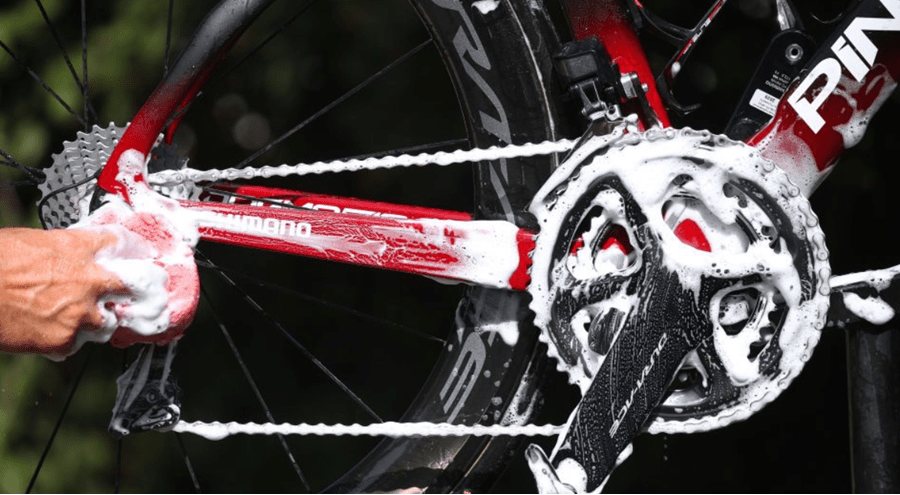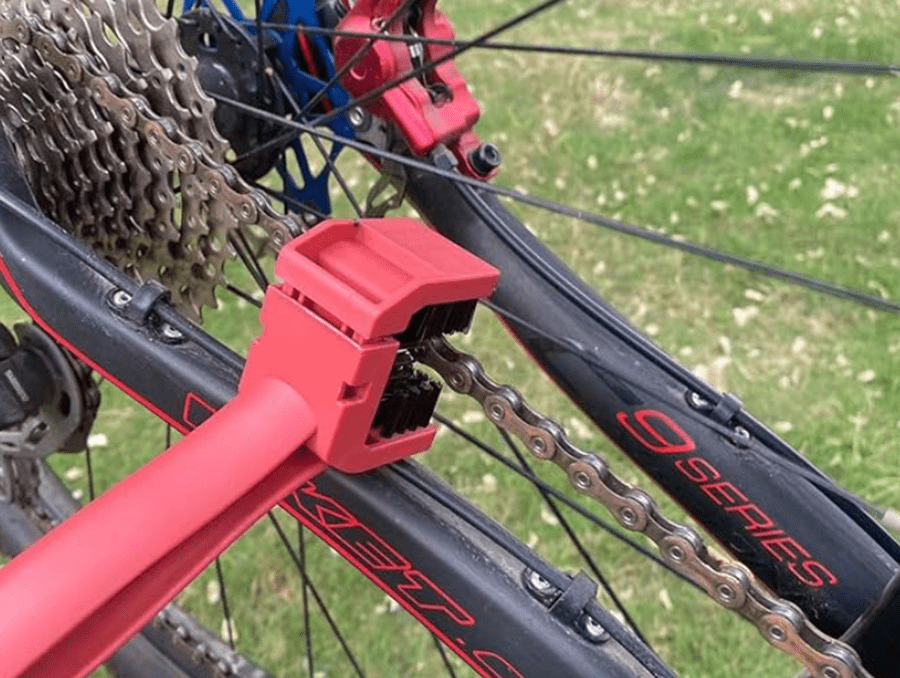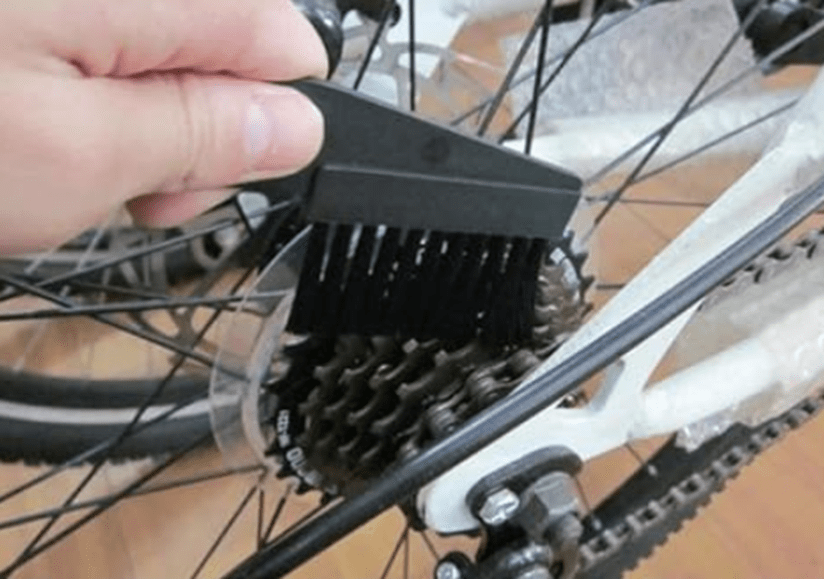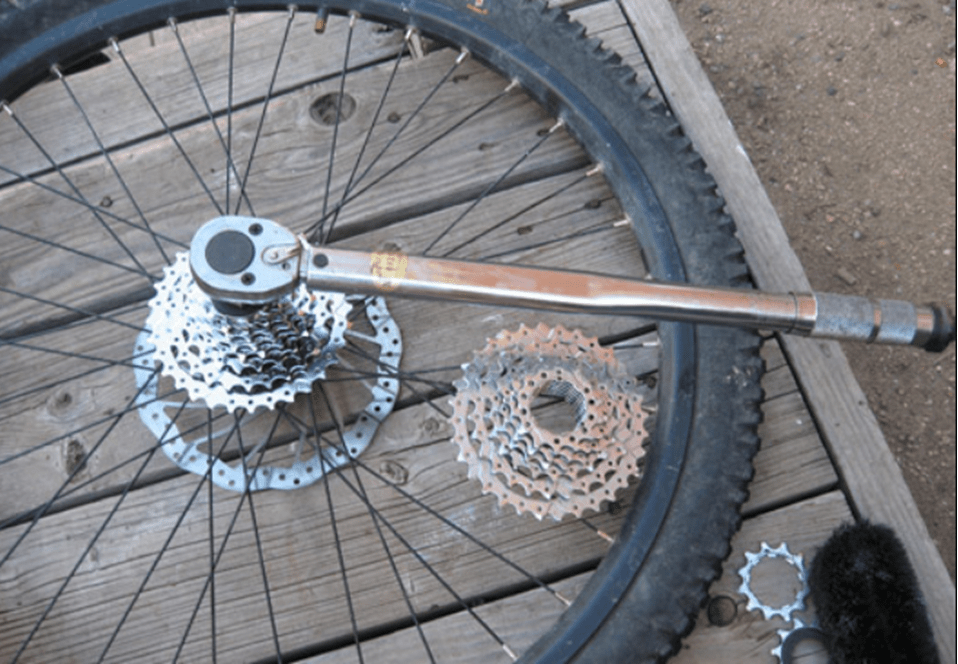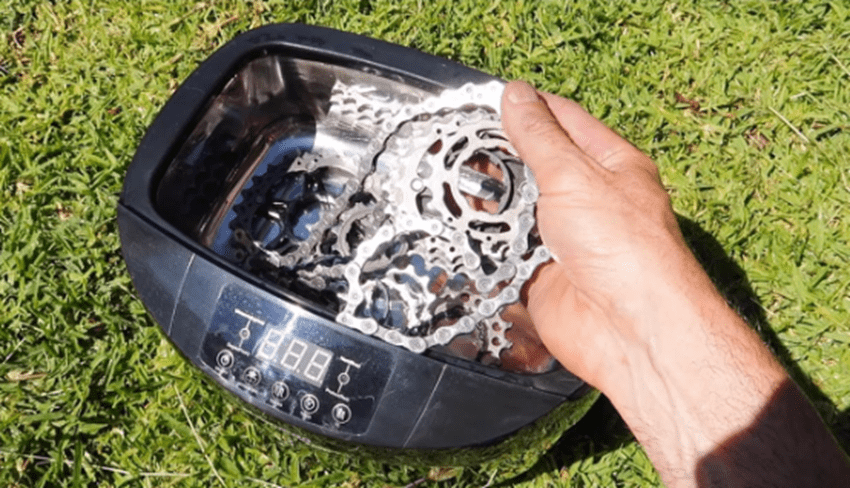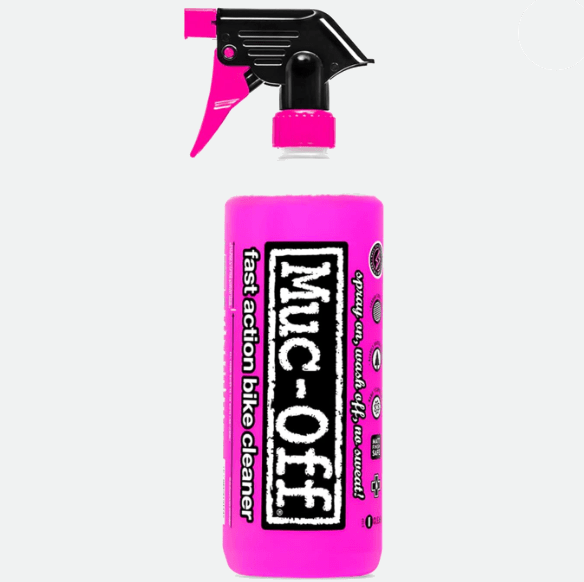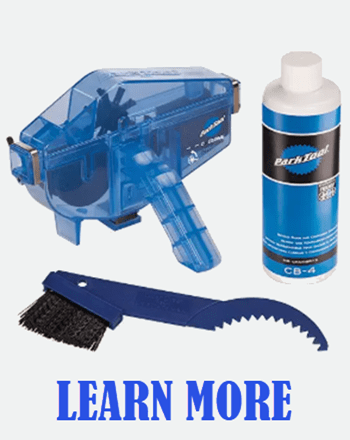Contents
- 1 Understanding Chain Wear Mechanics
Understanding Chain Wear Mechanics
A bicycle chain articulates over 44,000 times per mile ridden. Each movement creates friction between chain plates, rollers, and pins. As parts wear, the chain elongates beyond original specifications. Learning to clean a bike chain properly removes abrasive particles and ensures proper lubrication reaches all contact points. When you clean effectively, you substantially reduce this mechanical wear.
Why Regular Chain Cleaning Matters
Understanding Chain Maintenance
Your bicycle’s drivetrain efficiency depends heavily on proper maintenance. A clean bike chain not only performs better but extends the life of your entire transmission system, including the cassette, chainrings, and derailleur. Regular maintenance prevents premature wear of these expensive groupset components and ensures optimal gear shifting.
Performance Impact
Dirt and grime accumulation reduces shifting quality and power transfer through the drive system. When you clean a bike chain regularly, you’ll experience smoother gear changes and improved pedaling efficiency. A dirty chain can reduce efficiency by up to 5% and accelerate wear on the entire groupset. Chain replacement costs far exceed the time investment in regular cleaning.
Essential Tools and Materials
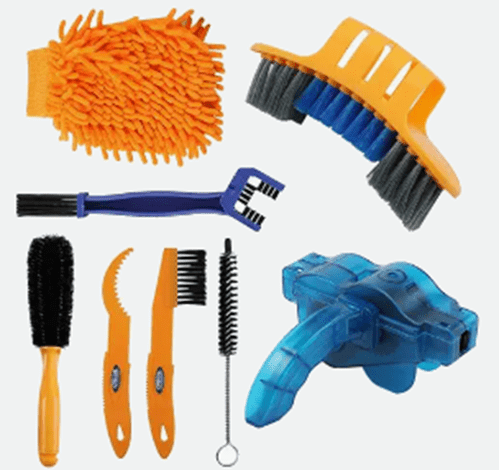 “Keep Your Bike in Top Shape! Check out these affordable kits on Amazon!”
“Keep Your Bike in Top Shape! Check out these affordable kits on Amazon!”
Cleaning Supplies
- Chain degreaser (biodegradable options recommended)
- Chain scrubber tool
- Old rags or shop towels
- Stiff-bristled gear brushes
- Clean water
- Chain lubricant (wet or dry variants)
- Disposable gloves
- Gear brush for cassette cleaning
- Degreasing solvent basin
Professional Tools
- Cassette removal tool
- Chain whip
- Chain wear gauge
- Work stand
- Ultrasonic cleaner (optional but effective)
- Torque wrench for proper reassembly
- Cable cutters for severe rust cases
Drivetrain Compatibility
Modern drivetrains require specific maintenance based on speed count:
- 11/12-speed systems: More sensitive to wear and contamination
- 10-speed systems: Moderate tolerance for wear
- 8/9-speed systems: Most tolerant of wear
- Single-speed: Requires less frequent cleaning but more robust lubrication
Step-by-Step Guide to Cleaning a Bike Chain
Preparation
Position your bike in a work stand or flip it upside down. Place old newspapers or a drop cloth underneath to catch drips. Before you clean a bike chain, inspect the crankset and rear derailleur for obvious damage or misalignment.
Initial Degreasing
Apply degreaser to the chain while rotating the cranks backward. Use a chain-cleaning tool for the most effective results. This device encases the chain and scrubs all surfaces simultaneously as you pedal. Pay attention to the chain tension through the rear derailleur pulleys.
Deep Cleaning Process
Remove stubborn grime using a stiff brush, working between the chain plates and rollers. For heavily soiled chains, repeat the degreasing process. To properly clean a bike chain, focus on the inner rollers where the chain engages with gear teeth. Clean the jockey wheels on the rear derailleur, as they collect significant debris.
Final Rinse and Inspection
Thoroughly rinse the chain with clean water to remove all degreaser residue. Inspect the chain links for stiff spots or rust. Check chainring teeth and cassette cogs for wear patterns. A properly maintained transmission should show even wear across all components.
Cassette Cleaning Techniques
Cassette Removal
Remove the cassette using appropriate tools for deep cleaning. Use a lockring tool and chain whip to safely dismount the cassette from the freehub body. Inspect the freehub bearings for smooth operation while the cassette is removed.
Deep Cleaning Process
Spray degreaser on the cassette and allow penetration. Use a gear brush between cogs, working systematically. Clean both sides of each sprocket, noting any worn teeth. Check for aluminum deposits on steel cogs, indicating wear.
Freehub Maintenance
While the cassette is removed, check the freehub mechanism. Clean any visible dirt from the pawls and ratchet system. Apply freehub-specific oil if necessary. Ensure the freehub body splines are clean and undamaged.
Reassembly Steps
Dry all components thoroughly before reassembly. Apply anti-seize compound to the freehub body. Install the cassette spacers in the correct order. Torque the lockring to manufacturer specifications, typically 40Nm.
Advanced Cleaning Methods
Chain Scrubbing Tools
Professional-grade chain scrubbers provide thorough cleaning with minimal mess. These devices use rotating brushes to clean all chain surfaces simultaneously. Pair with appropriate degreasers for optimal results. Replace internal brushes when worn to maintain cleaning effectiveness.
Ultrasonic Cleaning
To clean a bike chain, professional shops often use ultrasonic cleaners for deep chain maintenance. These machines use high-frequency sound waves to remove contamination from hidden areas. While expensive for home use, this method provides the most thorough cleaning possible and can extend chain life significantly.
Critical Measurements
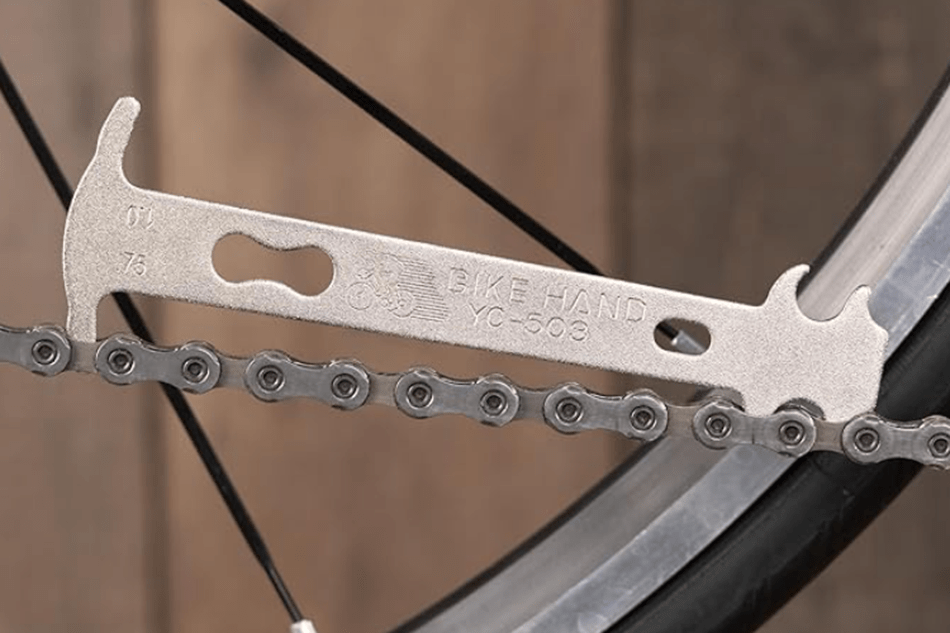 “Bike Chain Checker: Prevent Costly Repairs! Simple Tool = Big Savings ⭐️⭐️⭐️⭐️⭐️”
“Bike Chain Checker: Prevent Costly Repairs! Simple Tool = Big Savings ⭐️⭐️⭐️⭐️⭐️”
Chain wear indicators:
- 0.5% elongation: Plan replacement soon
- 0.75% elongation: Replace immediately to save cassette
- 1.0% elongation: Replace chain and inspect cassette
- Beyond 1.0%: Likely requires complete drivetrain replacement
Component Longevity
Chain Life Expectancy
- Road riding (dry conditions): 2,000-3,000 miles
- Road riding (wet conditions): 1,000-2,000 miles
- Mountain biking: 750-1,500 miles
- Racing/high power: 1,000-2,000 miles
Cassette Durability
- With timely chain replacement: 3,000-7,000 miles
- Delayed maintenance: 1,500-3,000 miles
- Mixed conditions: 2,000-5,000 miles
Chainring Wear
- Single chainring setups: 5,000-8,000 miles
- Multiple chainrings: 3,000-6,000 miles
- Well-maintained systems: 5,000-10,000 miles
Derailleur Components
- Pulley wheels: 5,000-8,000 miles
- Main pivot bearings: 10,000+ miles
- Clutch mechanisms: 5,000-8,000 miles
Maintenance Tips and Best Practices
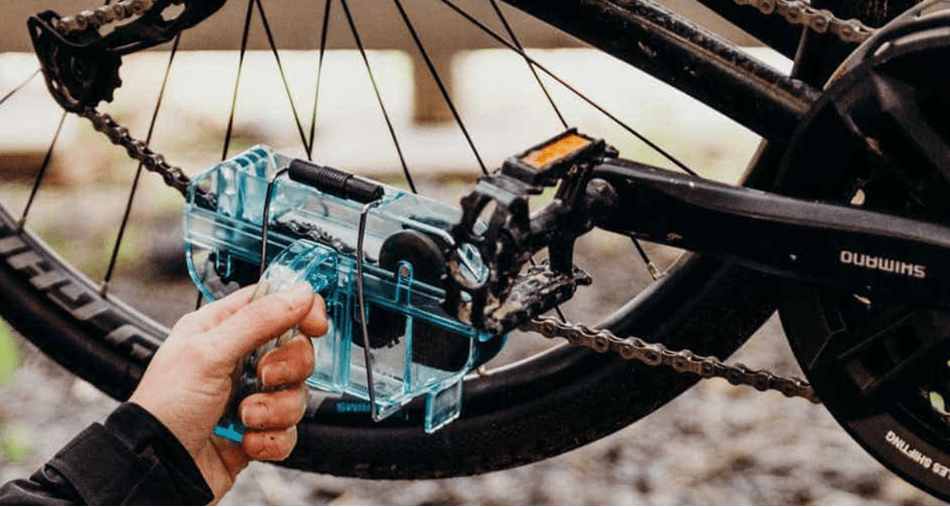 “Park Cyclone Chain Cleaner: 2-Minute Deep Clean, Pro Results! ⭐️⭐️⭐️⭐️⭐️”
“Park Cyclone Chain Cleaner: 2-Minute Deep Clean, Pro Results! ⭐️⭐️⭐️⭐️⭐️”
Cleaning Frequency
Clean a bike chain every 200-300 miles in dry conditions, more frequently in wet or muddy environments. Monitor chain wear with a gauge tool. Replace chains reaching 0.75% elongation to prevent cassette damage.
Lubrication Types
Choose appropriate lubricant for your riding conditions:
- Dry lube: Clean-running, ideal for dry conditions
- Wet lube: Better penetration, water-resistant
- Wax-based: Excellent cleanliness, requires thorough preparation
- Ceramic: Premium option, reduces friction
Preventive Measures
- Install frame protectors near the chainstay
- Use mudguards in wet conditions
- Wipe the drivetrain after every ride
- Store bikes in climate-controlled spaces
- Check chain tension regularly
- Monitor shifting performance
- Keep derailleur hanger alignment correct

Professional Maintenance
Schedule professional servicing annually or every 2,000 miles. Bike shops can:
- Measure frame and derailleur alignment
- Assess groupset compatibility
- Check bottom bracket condition
- Evaluate chainring wear
- Test shifting under load
- Identify potential warranty issues
Environmental Considerations
Use biodegradable degreasers when possible. Dispose of cleaning materials properly. Collect used cleaning solutions for appropriate disposal. Consider ultrasonic cleaning for reduced solvent use.
Regular maintenance significantly extends component life while maintaining optimal shifting performance. This systematic approach to chain care preserves the entire groupset and ensures reliable power transfer. Invest time in proper cleaning techniques to maximize component longevity and maintain peak drivetrain efficiency.
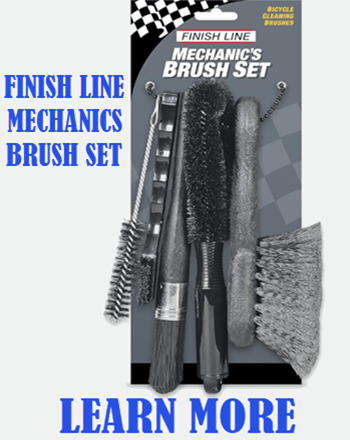 |
We earn from qualified Amazon purchases with NO cost to you. ANY item that you need or were going to purchased anyway through any of our links, helps support this site. Thank you for your support!
If you enjoyed learning about this week’s featured bicycle, don’t miss out on more classic bike goodness! Visit our website at classicjapanesebicycles.com for an extensive collection of timeless Japanese bikes and their unique stories. Plus, check out our YouTube channel, Bicycle Restoration Man, for detailed restoration videos and showcases of our finished projects. Subscribe and join our community of bike enthusiasts!



